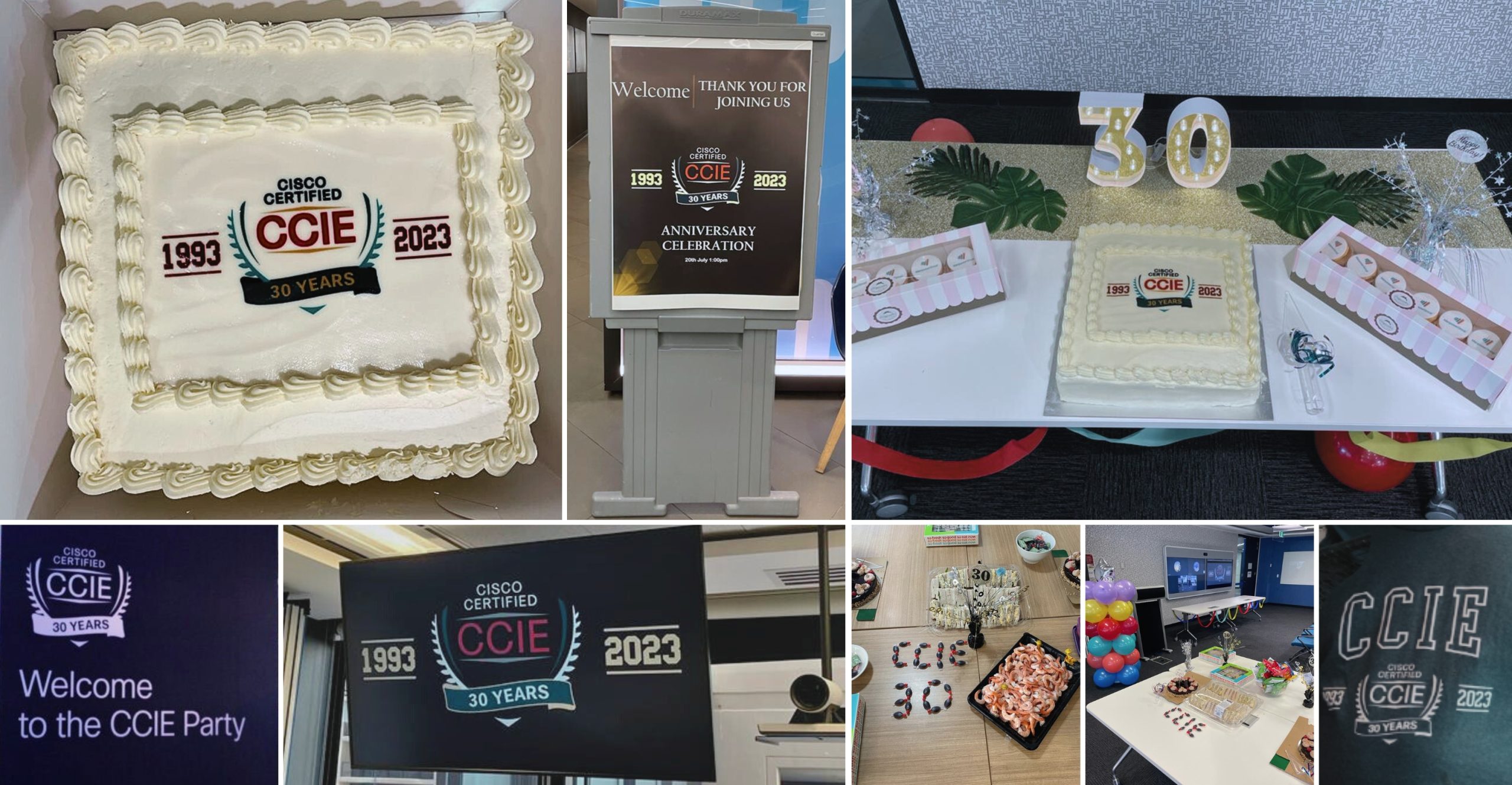Celebrating 30 Years of the CCIE Certification Program

How do we achieve success in this industry? It was the question I pondered 20 years ago when I set out to take my career to the next level and attain what few have: the Cisco Certified Internetwork Expert (CCIE) certification.
Now leading the CCIE program as Cisco’s Director of Certifications, I’ve experienced firsthand the revolutionary impact of this program on my peers and the industry.
This year, we celebrate the 30-year anniversary of the CCIE certification. Let’s look back at where we came from—and how far we’ve come.
Brief History of the CCIE Program
- 1990: Networkers Users Symposiums launches: As networking booms with new levels of connection and more challenges in connectivity, we launch Networkers Users Symposiums – also known as “Networkers.” The conference, later renamed Cisco Live, enables customers to learn, collaborate, and grow the industry together.
- 1993: CCIE launch: Cisco announced the CCIE program publicly on September 27, 1993, when former CEO John Chambers was quoted, “The CCIE program begins where other vendors’ certification programs leave off.”
- Fun fact: The original name of the program was going to be “Cisco Top Gun.” However, the famous Tom Cruise movie by the same name had already been released. We figured there may be some legal issues in using that name… so instead, we chose “Cisco Certified Internetwork Expert.”
- 1993: First CCIE Award: The CCIE program chose to start its numbering system with 1024 (2 to the power of 10). That number went into a plaque on the CCIE lab itself in San Jose, CA, followed by number 1025, awarded to the first person to earn the CCIE. And the rest is history.
My CCIE Journey
My interest in becoming a CCIE started in the late 90s. Tech was very different from today. The internet was evolving, and networking was a completely new concept. I was looking for a challenge to advance my career.
When researching how to take my career to the next level, I discovered Cisco, a pretty new tech company at the time. Not only did I find a way to test my skills with the CCIE program, but a window of opportunity. The exam ensured perfection, and I liked the challenge.
Becoming a CCIE opened career advancements for me. Not only was I able to receive promotions with more pay, but I also gained more peer respect and recognition—as did my colleagues who received the certification. There is a high level of respect for people who achieve CCIE. You become part of an elite group.
In general, value is directly equivalent to the relevancy of a product. If the CCIE test was irrelevant to what I did in my job, I would not have pursued it. And if it was not updated to the technology of today, the program would fail. I’ve been a CCIE for 20+ years and can still apply my learnings from the program.
CCIE program is a true test of deep knowledge and experience, an endorsement (validation) of being an expert – crème de la crème!
The CCIE Program’s Transformation Over Time
As technology has evolved, the program has changed significantly. In the early days, the CCIE program was a two-day test, where candidates spent the first day setting up the hardware and initializing the pod with basic configurations. Then, candidates would come back for a second day to perform more advanced configurations, spending the second half of the day troubleshooting scenarios.
Today’s CCIE program has been streamlined to a one-day test, removing the now trivial steps and focusing more on network strategy, architecture, and the network lifecycle, including planning and designing to meet customer requirements. The enhanced lab exam is focused on the end-to-end network lifecycle from Day 0 (planning & designing), Day 1 (implementing and deploying), and Day 2 (operating & maintaining), testing comprehensive skills across the entire spectrum of network solutions.
Starting last year, we introduced Cisco Certification Roadmaps, an agile and iterative cadence-based model to update exams more frequently and incrementally, keeping them more current and relevant, aligned with rapid technology evolution, and ensuring relevancy for today. The roadmap will provide timely and relevant information to keep you ahead of changes being introduced as you study for the CCIE exam and all other Cisco certifications.

Join the CCIE Celebration
Join us in celebrating the 30th anniversary of the program and become a part of the #CCIE30 community!
In June, we kicked off celebrations at Cisco Live in Las Vegas, but we will be celebrating around the world throughout the year. Each CCIE lab site will host “birthday” celebrations, bringing customers and employees together to share stories and discuss how the CCIE program changed their lives.

How Can You Become a CCIE?
This exam is about validating your experience—in the field and in real life.
Most people who fail lack experience. I would know. I failed previously, not due to lack of studying but because I was still too new in my career. Once I started actually doing the scenarios presented in the exam in my job, my learning accelerated, and so did my CCIE prep. It was all about getting hands-on and practicing.
Even once you have ideally gained five to seven years of experience, you still must prepare. Becoming a CCIE is hard work, but we have resources available to you.
Whether you are on your journey to becoming a CCIE or working toward advancing your career in general, I leave you with this advice: Focus on pursuing excellence, and success will follow.

Join the CCIE Community on the Cisco Learning Network. | Sign up for Cisco U.
Follow Cisco Learning & Certifications
Twitter | Facebook | LinkedIn | Instagram
Use #CiscoU and #CiscoCert to join the conversation.
Share:

